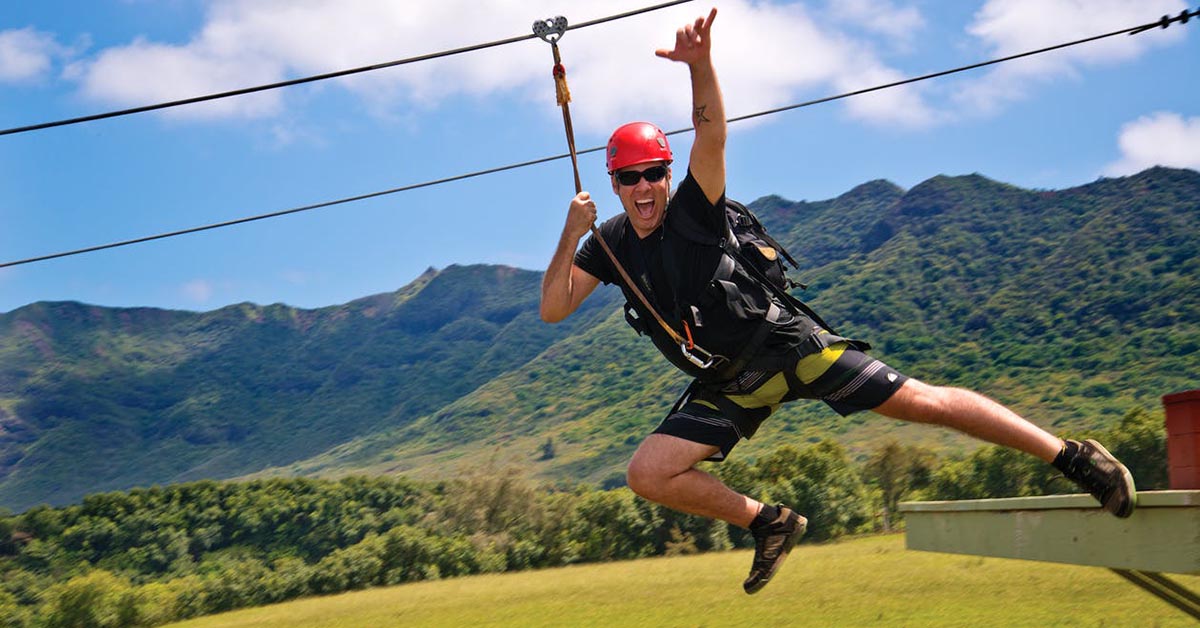
Despite the complexity of the zip line operation, visitors shouldn’t ever be aware of any individual component, let alone the state of the trolley they’re hanging from. This is where meticulous examination and upkeep are necessary, especially for parts that are closest to the user, like the trolleys in your park.
Because trolleys are an essential component of a system that must work as a whole, it is ideal to treat trolley upkeep as part of a park’s systematic operating routine. Additionally, as every system is different, different locations have different needs for specific maintenance.
What must be done at any given operation depends on a number of things. The materials used in trolley components and the speed of zip lines are two variables that can be controlled and predicted, however environmental conditions cannot.
Your team can maintain trolleys in your park safely and efficiently with reduced downtime and lower costs by including a few fundamental ideas into the maintenance methods.
Every trolley design has unique maintenance demands, which the manufacturer ought to address in the materials supplied. Additionally, each manufacturer’s trolleys interact with the other parts of the zip line in slightly different ways, depending in part on the design and characteristics of the individual product.
But regardless of the manufacturer, trolley maintenance adheres to a few standard rules for good maintenance. A little oil here and there, warm water, and soap are all effective maintenance options for trolleys that the user can take advantage of. To keep things running smoothly, several different things can be done.
One recurring idea is that trolleys ought to be kept free of grit and debris, especially on gliding parts. The trolley should be cleaned as needed and on a regular basis. Gliding parts can frequently benefit from a little lubricant application, such as machine oil.
If a trolley comes into touch with salty water, it needs to be immediately rinsed out and sanitized because saltwater will dramatically reduce the life of these components. However, because they can hasten the degradation of the trolley, operators should normally avoid using power or jet washers and abrasive cleaning agents.
Each trolley should be inspected, cleaned, and stored at the end of the season away from extreme temperatures and sunlight.
It’s preferable to rely on the product manual for further product-specific considerations, as well as thoughtful technician hiring and training, and a careful inspection routine for your park’s equipment.
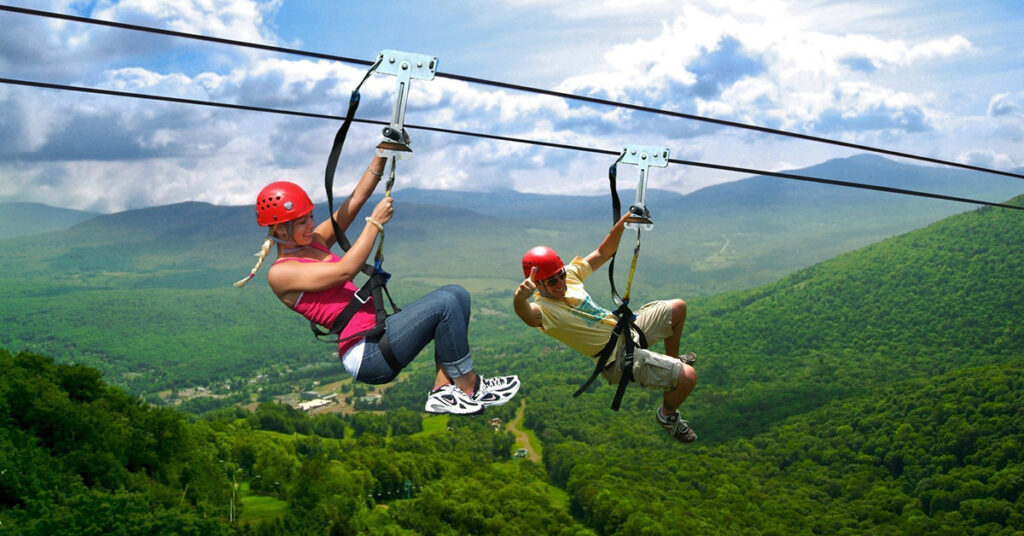
Inspection plus training equals smooth operation
Investment in employee training on proper trolley inspection and maintenance is the first crucial part of a trolley maintenance program. But several persons interviewed claimed that hiring a committed technician is the finest investment in a park’s safe operation.
The systems for zip line attractions have gotten more difficult to maintain securely as they have gotten longer, quicker, and higher in recent years. A more highly trained maintenance person is required as complexity increases.
Even if a person with specific experience in inspection and maintenance is not easily accessible, training for the position is. The majority of manufacturers provide personal protective equipment (PPE) training programs that cover how to maintain their particular items.
The PPE course often teaches technicians not just the “how” and “what” of equipment maintenance, but also the standards that underpin it for a certain manufacturer’s products. A general overview of the organizations that create standards is usually given at the beginning of PPE lessons along with the aim of inspection.
As a result, technicians get specialized knowledge about problems to look out for during routine equipment checks related to that manufacturer’s offerings. All PPE courses will cover maintenance issues unique to the products of the host manufacturer, but they also include general maintenance recommendations that should be used when the park does routine equipment checks.
These training programs don’t require enrollment. Additionally, it is crucial that operators take the initiative to formally train their maintenance staff because many trolley manufacturers do not communicate with operators on a regular basis.
-
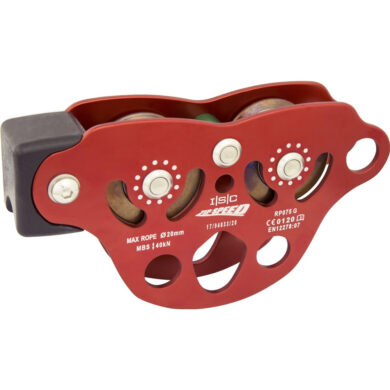 ISC Zipspeed-S Trolley€ 183,00 – € 271,00 Ex VAT
ISC Zipspeed-S Trolley€ 183,00 – € 271,00 Ex VAT -
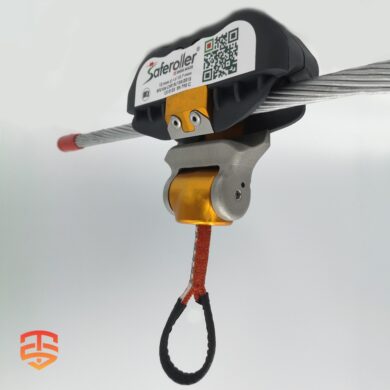 Saferoller Trolley V3 (PPE)€ 240,00 – € 252,00 Ex VAT
Saferoller Trolley V3 (PPE)€ 240,00 – € 252,00 Ex VAT -
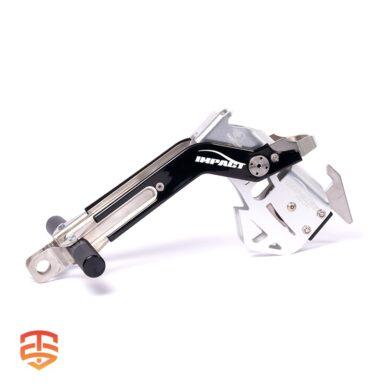 LightSpeed Impact Zip Line Trolley€ 199,00 – € 389,00 Ex VAT
LightSpeed Impact Zip Line Trolley€ 199,00 – € 389,00 Ex VAT
Record everything
Once trained, a park’s maintenance crew should check the trolleys on a regular basis. Most trolleys are inspected on a daily and monthly basis, respectively. Together, these checks offer assurance regarding the product’s regular usability, safety, and long-term wear associated with heavy-duty everyday use.
daily inspections Technicians should prioritize proper function during a daily check. Is the trolley moving along the cable smoothly? Is there a proper interaction with the braking system? What is the state of the brake system’s interface? Are any components—like plastic ones—missing? Is it obviously worn in a way that suggests a potential systemic cable problem? In a daily examination, the question of whether it can be put back in service that day is asked in addition to functional and visual wear.
The individual trolley should be taken out of operation and evaluated for repair or replacement if any of these individual examinations show atypical abrasions that go beyond surface wear or a change in function.
More time and resources are needed for monthly inspections. The wear points on the trolley are measured by the technicians using instruments like calipers, and the measurements are compared to those noted in earlier monthly inspections as well as the original product specifications from the manufacturer.
These comparison measures can highlight underlying problems with the way that trolley functions, such as how the zip line’s unique characteristics—wind, speed, frequency of use, ambient conditions, and other things affecting the line—affect it.
Trolleys must frequently be sent to the manufacturer for dismantling and testing in order to pass annual inspections. For many manufacturers, on-site trolley repairs are restricted to part replacement rather than component repair.
These checks should all be meticulously documented. This is a crucial point: technicians develop a thorough understanding of the operational requirements of the park’s equipment through meticulous documentation of every issue, wear pattern, and daily inspection of each individual trolley and zip line. This knowledge serves as the perfect foundation from which park operators can develop their own site-specific operation and maintenance manual.
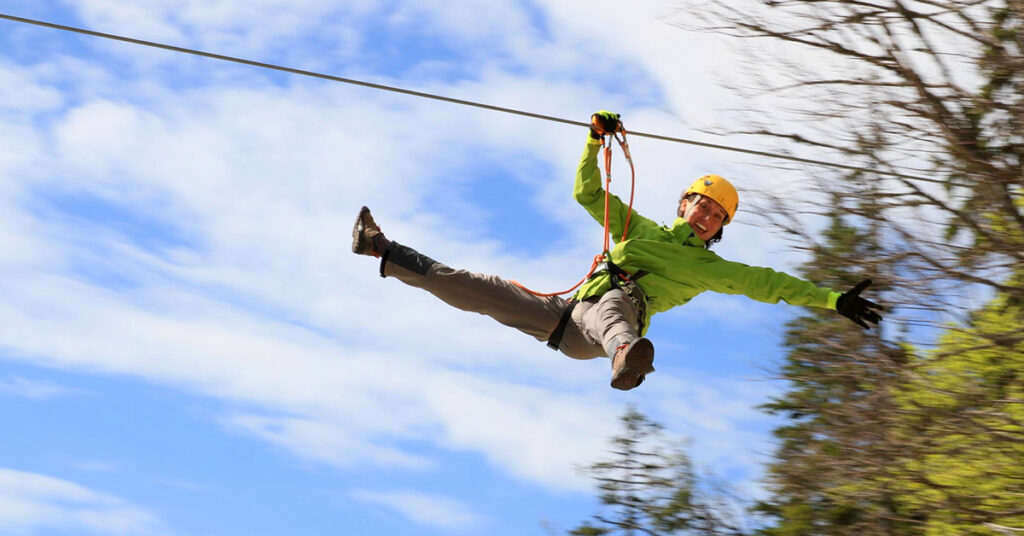
Composing your own guide
Any trolley’s manufacturer establishes guidelines for the secure use of its machinery based on internal testing and scant user feedback. However, each aerial adventure operation’s equipment is employed in a specific environment, and as a result, the rules may need to be adjusted depending on factors like the wind, temperature, humidity, and workload.
Additionally, you and your experts can construct the particular operation manual for your park using well-kept maintenance program logs. The equipment characteristics and product specifications for the park’s machinery, including the trolleys, are the first things in this document. These parameters are then combined with the operational logs from your particular site and maintenance schedule. This unique operating manual acts as a manual for utilizing that particular equipment under the unique circumstances of your site. Working on this with your devoted maintenance personnel enables an understanding of the quirks of your machinery.
For instance, due to its steepness, zip line four’s braking mechanism may need its pads replaced more frequently than other lines. Only thorough record-keeping and study of the park’s operations and infrastructure may yield this information.
Most manufacturers advise working with your supplier or the contractor who built the park to determine the best course of action for repair or replacement if a trolley is not operating as it should—perhaps a technician notices some unusual condition during a routine inspection or after a unique event, such as a trolley hitting a brake particularly hard or getting stuck in the middle of a line.
Discuss with your supplier
Since trolleys are usually enclosed, sealed machines, on-site extensive maintenance is not possible. The integrity of the trolley can typically not be maintained by fixes that your maintenance personnel can make other than replacing things like plastic carabiner covers. The only person who typically has the equipment to test a trolley to determine whether it would be safer for regular use to fix it rather than replace it is the manufacturer.
Therefore, replacing a broken or malfunctioning trolley through the provider is a better option for operators than trying to fix it. If there is even the slightest uncertainty regarding a trolley’s safe operation during any inspection, whether it be daily or monthly, it should be promptly retired, and the supplier should be contacted for a replacement, either through a manufacturer’s warranty or by purchasing a new trolley.
It’s also conceivable that your manufacturer or supplier will have some knowledge of the particular maintenance requirements for the construction of your park. The support staff for the product might be able to assist in isolating the root of the trolley damage.
Any installation of a zip line must include trolleys. Your park can maintain your trolleys operating in top shape frequently for many years—possibly even beyond the lifespan of the park itself—with regular cleaning, inspection, safe use within product parameters, and the knowledge that comes with thorough logs kept by committed employees.
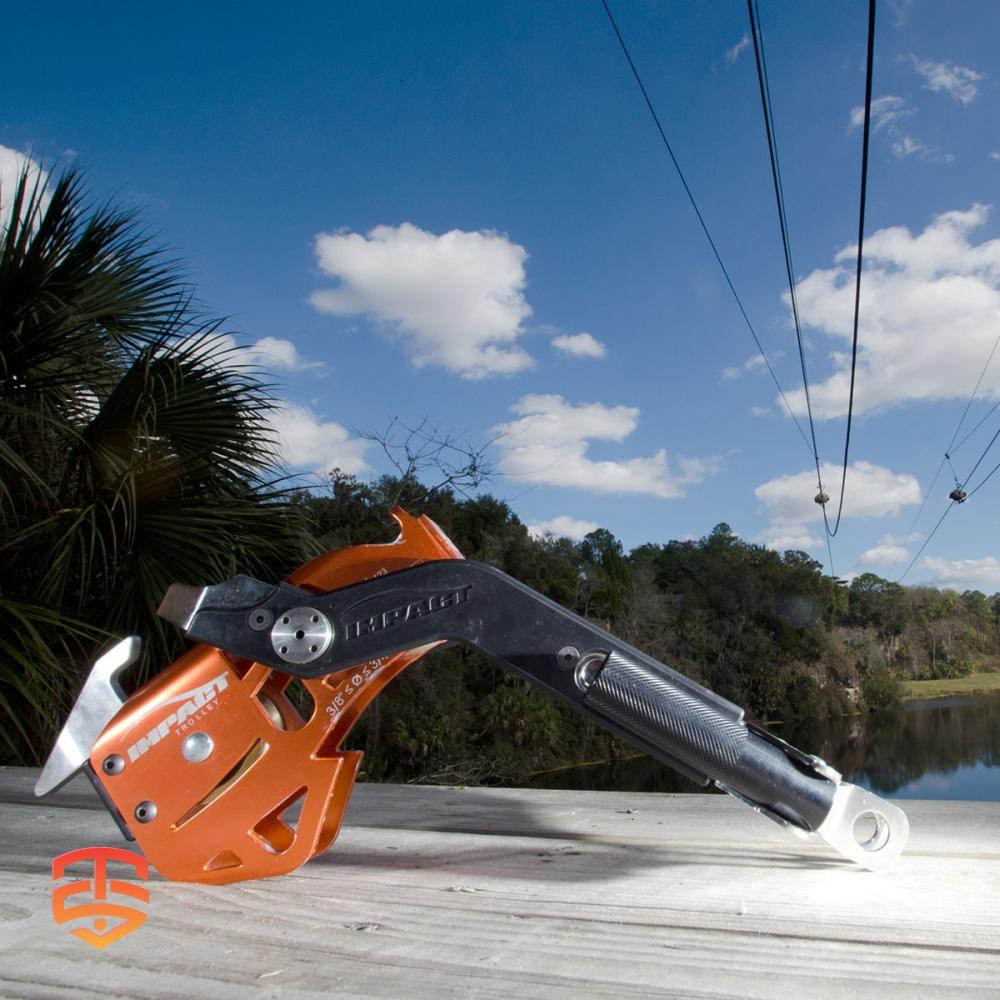
Zipline Trolleys
Our Zipline Trolleys are Designed for Zip Lines and Engineered for Durability
The Self-braking Magnetic Zipline Trolley solves the major safety issues around the controlled and safe braking situation at the end of high speed zip wire courses.
From the fully featured customizable Impact Trolley to the lightning fast one-handed install of the EZ Clip to the compact affordable Micro Trolley, we have a zip line trolley for you. Every trolley is equipped with premium high-speed bearings and optimized for smooth and consistent impact braking.
The ZipSpeed Trolley range caters for all kinds of zip lines from lightweight Clip’n’Zip trolleys for Zip Parks, right through to high-speed performance trolleys for super-fast lines!
Beyond the Basics: Unveiling Zipline Technology with Expert Analysis
Intrigued by the potential of Zipline technology? You’ve come to the right place! This article provides a solid foundation. But if you’re eager to delve deeper and gain insights from industry experts, keep reading…
- Zip Line Design: Components for a Complete System
- Considering operating and investing in a zipline?
- 9 Zipline Mistakes You Don’t Know You’re Making
- Magnetic Zipline Braking: A Revolutionary Way to Ensure Safe Rides
- Pros and Cons of Different Zip Line Brakes
- Expert Tips for Zip Line Brake Installations
- White Paper on Zipline Emergency Arrest Devices (EAD)
- The Importance of Optimizing Zip Line Design for Rider Speed
- Does your zip line need an emergency arrest device?
- The Magnetic Self-braking Zipline pulley
- Zipline Braking and landing considerations
- Why Zip Line Trolley Bearings Matter
- Whitepaper: Zipline Braking Dynamics
- Zip Line Installation: Give them the Best Ride
- How to startup a Successful Zip Line Business
-
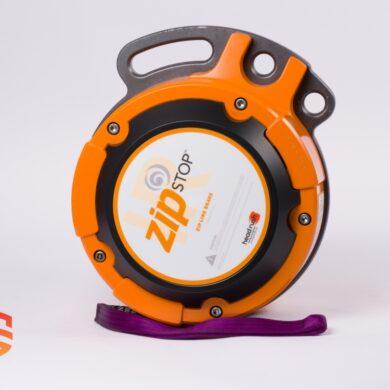 zipSTOP IR Zipline Brake | 24 – 60 kph€ 5.649,00 – € 5.799,00 Ex VAT
zipSTOP IR Zipline Brake | 24 – 60 kph€ 5.649,00 – € 5.799,00 Ex VAT -
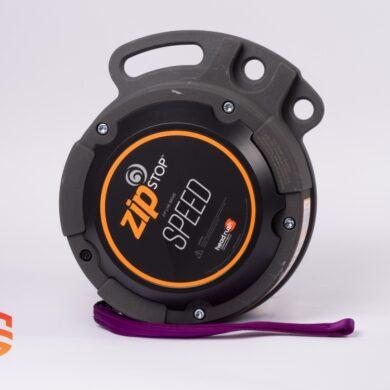 zipSTOP SPEED Zipline Brake | 50 – 72 kph€ 6.099,00 – € 6.349,00 Ex VAT
zipSTOP SPEED Zipline Brake | 50 – 72 kph€ 6.099,00 – € 6.349,00 Ex VAT -
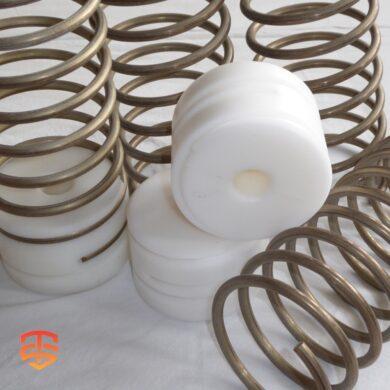 Spring Brake System | Primary & EAD zipline brake€ 80,00 Ex VAT
Spring Brake System | Primary & EAD zipline brake€ 80,00 Ex VAT







